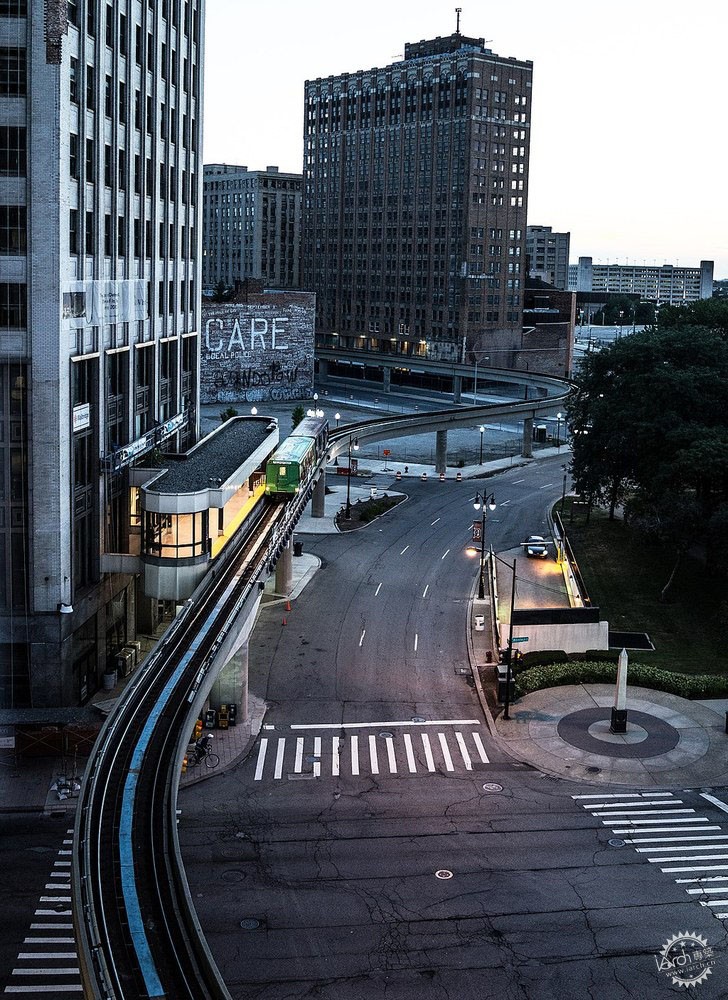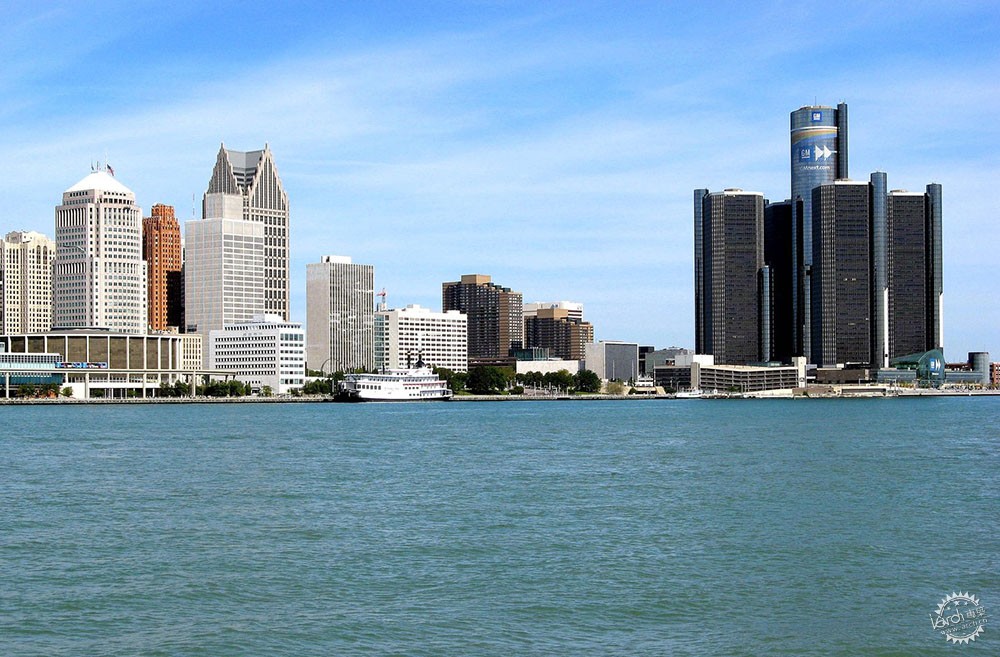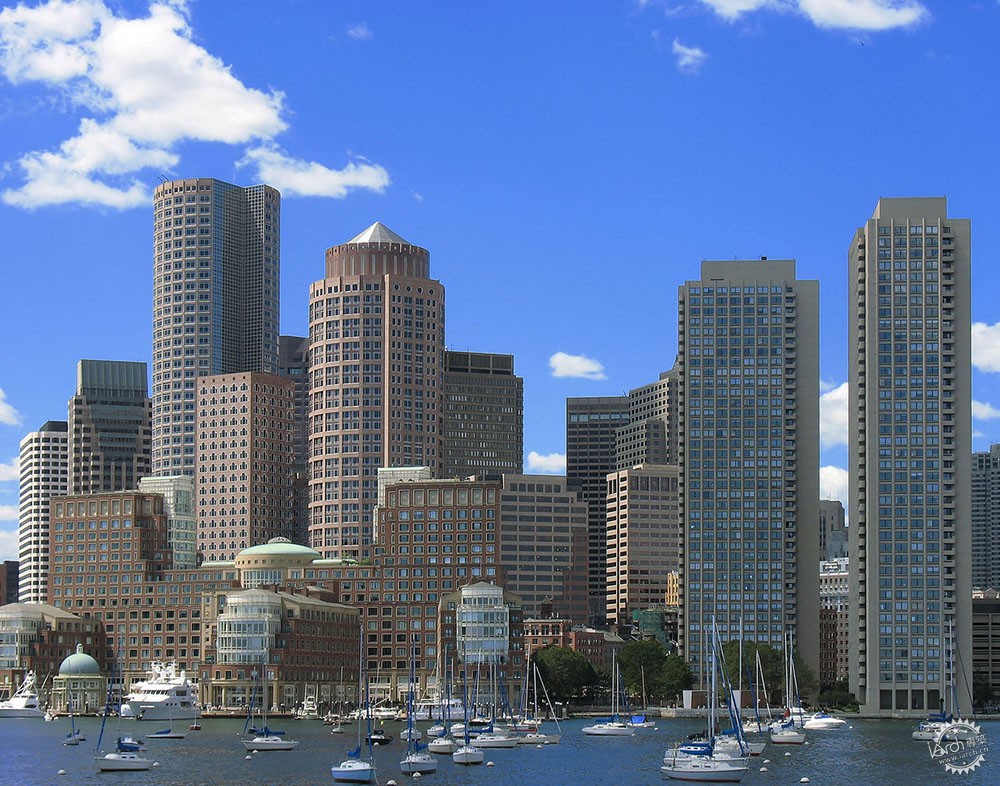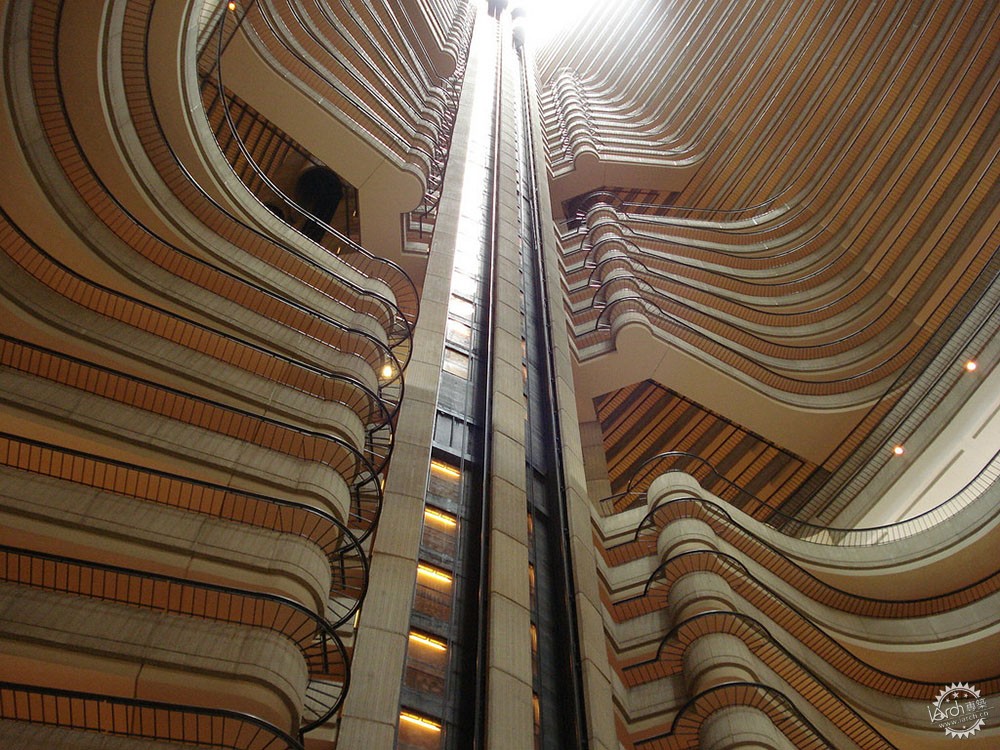
底特律文艺复兴中心/John Portman's Renaissance Centre in Detroit. Image via Wikimedia
忽略了城市的都市主义:约翰•波特曼在底特律留下的建筑遗产
Urbanism that Forgot the Urban: John Portman's Legacy in Detroit
由专筑网邢子,蒋晖编译
这篇文章最初发表在《Common Edge》上,名为“底特律能从约翰•波特曼的文艺复兴中心的影响中彻底恢复吗?”
我认为尽管我们从这些失败的案例中能学到的东西很少,但这些项目仍然值得我们深入的了解。
那么就让我们从底特律开始吧。文艺复兴中心是波特曼最大及最着名的项目之一。但是这栋由七座相互连接的摩天大楼所构成的庞大建筑群却为今天的城市规划者提出了一些难题:底特律市中心能否完全从这个庞大而又欠缺考虑的项目中恢复过来?而且,更重要的是,为什么没有其他城市被这种简明的教训所困扰呢?
This article was originally published on Common Edge as "Will Detroit ever Fully Recover from John Portman's Renaissance Center?"
I think it’s worth going into a bit more detail about these projects, since we seem to have learned so little from their failures.
Let’s start with Detroit. The Renaissance Center was one of his largest and most celebrated projects. But this sprawling complex of seven-interconnected skyscrapers poses some difficult questions for urban planners today: can downtown Detroit ever fully recover from this mammoth and ill considered development? And, more importantly, why haven’t other cities learned from its clear and stark lessons?

从麦迪逊大厦看,底特律的高架轨道贯穿市中心/Detroit's elevated rail that runs through the downtown, as seen from the Madison Building. Image via Wikimedia
被当地人所熟知的文艺复兴中心的第一阶段于1977年开放,它有效地消除了那些摇摇欲坠但又确实存在的商业生活所留下的弊端,并将其控制在底特律河上一个巨大的堡垒内。为了挽救这场规划的灾难,底特律从文艺复兴中心建造了高架列车,为了吸引更多的人离开街道。但在这样的情况下为什么仍会有人在街道旁开设底层商店呢?
虽然清理的热潮并不是从波特曼开始的,但是文艺复兴中心的确为多个体育场的方案、赌场、占地数英亩的停车场以及车库的这类场所打开了闸门,消除了最终复兴所需的更多的城市肌理。这些著名的场馆(每个场馆都承诺要重振市中心)吸引了郊区居民偶尔回来参加活动,但游客们开车进进出出却没有真正接触到真实的城市。城市所剩下的只是一个除了开车以外几乎不可能通过的被切开的中心。城市中仍然存在一些生命,但它们大多被高速公路所隔离。
文艺复兴中心之后,拆迁的工作仍在继续快速的进行。剩下的城市肌理需要几十年的时间才能重新焕发活力。如今,底特律正被誉为“复兴的城市”。但这种复兴的种子早在2000年初就已经种下,但与文艺复兴中心或是其他想要刺激重建的大型项目毫不相关。
事实上,一些规模较小的举措在有机的对立中逐渐地表现出来。在密歇根大道和第14号大街这两个拥挤的拐角处的Slows Bar BQ周围出现了一个令人惊叹的街区,该地位于科克镇(底特律最古老的街区)、墨西哥城(该市最大的西班牙裔地区)和市中心的连接处。一个街区接着一个街区,一小群充满热情的当地居民翻修了10栋砖砌的与BQ酒吧相邻的小建筑,这些建筑的颜色、年代和条件都各不相同。Phillip Cooley和他的兄弟与父亲一起设计这个街角,他们用旧木材和回收的建筑细部打造出了街角的餐馆,这是一个经典的小型商业促进了城市复兴的例子。
The first phase of the Ren Cen, as it’s known by locals, opened in 1977 and effectively vacuumed out what was left of the shaky but existent commercial life, locking it up inside a massive, internally confusing fortress on the Detroit River. To compound this planning disaster, Detroit built an elevated train from the Ren Cen, with limited destinations, drawing still more people off the street, virtually guaranteeing decades of dead pedestrian life. Why would an entrepreneur open a ground floor shop, when all of their potential customers were whizzing by overhead?
While the clearance frenzy didn’t start with Portman, the Ren Cen certainly opened the floodgates for multiple stadia and assorted schemes, casinos, and acres and acres of parking lots and garages, erasing more of the urban fabric necessary for eventual rebirth. These celebrated venues (each one promising to revive downtown) drew suburbanites back for occasional events, but visitors drive in and out without actually touching the real city. What remained was a chopped up center, nearly impossible to navigate by means other than the car. Pockets of life remained, but they were largely isolated by highways.
After Ren Cen, demolition continued apace. It would take decades for the remaining fabric to begin to come alive again. Today Detroit is being hailed as a “comeback city.” But the seeds of that revival were recognizable on the ground, as early in the 2000’s. And they had nothing to do with the Ren Cen, or other large scale projects designed to spur redevelopment.
Smaller initiatives, in fact, sprang up in almost organic opposition to them. A wonderful neighborhood was emerging around Slows Bar BQ at the hard-pressed corner of Michigan Avenue and 14th Street, the nexus of Corktown (Detroit’s oldest neighborhood), Mexican Town (the city’s largest Hispanic area) and downtown. Block by block, a small group of passionate local residents renovated ten, small brick buildings of varying color, age and condition adjacent to Slows Bar BQ. Slows was created by Phillip Cooley, along with his brother and father, and they fashioned the corner eatery out of old timbers and salvaged architectural details, a classic small business catalyst for urban rebirth.

via Wikimedia
一群精力充沛的设计人员清理了街对面一个长期被忽视的公园,公园将与这座城市中最明显的失败作品——密歇根中央车站(1913年)相连。时至今日,在这座建筑的周边经历了不到十年的社区复兴,这座自1988年以来就被废弃了的18层火车站和办公楼建筑正在进行翻修,它是由建造了纽约的中央车站的建筑师(Warren & Wetmore、Reed和Stem事务所)设计的。
这是全国各个城市真正意义上复兴的实例——小型本土项目为真正的复兴埋下了种子。由于对城市的经济和社会的复杂性缺乏基本的了解,使大多数专家和决策者陷入了瘫痪,他们往往以错误的进步方式为名,缺乏了对规划的长远角度。关于力量和复兴的重要故事往往都被隐藏起来了,被最新的超大规模的城市救赎承诺的重磅声明所掩盖。
多年来对底特律的观察和写作,让我感兴趣的不仅仅是市中心那些高度集中的卓越的战前建筑,其中还有一些是美国城市中最好的建筑。那些建筑群仍然保持着许多城市所希望的紧凑的城市布局。近年来,开发商发掘、修复并改造这些建筑将它们变成住宅或者混合用途,正如美国人希望再次居住在市中心一样。
但是底特律与大多数城市一样拥有着真正的社区,每个社区都有着不同的故事,不同的催化因素以及不同的人与建筑的组合。即使像底特律这样受到数十年人口流失的困扰而陷入困境的城市,也有着丰富的社区空间:斯特罗啤酒厂区、和谐公园、墨西哥小镇、东部市场、科克镇。当然还有印第安村,一个20世纪初为底特律精英阶级建造的国家历史区域。与古老的伍德沃德大道平行的卡斯回廊,早在20年前就开始渐渐展现出复兴的标志——咖啡店、面包店和其他设施。(今天最有争议的问题之一就是高档化。)新生活的迹象在其他地区出现,直到精明的开发商、年轻的价值追逐者和艺术家们开始了如今的名声大噪的修复、改造和复兴,那些城市官员和规划者才意识到这一点。
近年来,许多城市被重新发掘。但同时还伴随着一个警告:那些拥有大量剩余城市肌理的市中心经历了更强劲的转折;那些过度推平的城市很难恢复往日的活力,那是因为人们需要有更大的停车空间,而不是实际的停车理由。
幸运的是,并非每个城市都受到了波特曼巨大的影响。1978年,他在华盛顿特区涉及拆除该国历史最悠久的合法剧院——国家剧院(1835年)的疯狂计划被完全否决,美国历史上几乎所有的主流戏剧明星都曾在此演出。就在拆除计划提出前不久,该剧院进行了耗资100万美元的翻修。波特曼曾试图用两栋16层的中庭酒店/办公室/零售大楼综合体来取代它和几乎整个街区的各种结构。他反对拯救国家剧院或在剧院内部建造新剧院,并表示这会干扰新项目的设计和经济效益。
The same group of energetic renovators cleaned up a long-neglected park across the street that connected it to the city’s most visible failure, Michigan Central Station (1913). Now, after less than a decade of neighborhood-based revival around it, this extraordinary 18-story train station and office building, abandoned since 1988—designed by the architects (Warren & Wetmore and Reed and Stem) that created New York’s Grand Central Terminal—is reportedly in line for renovation.
This is the real uncelebrated story of genuine rebirth in cities across the country—small local projects planting the seeds for authentic revival. The absence of a fundamental understanding of the economic and social intricacies of a city—its urban ecology—cripples most experts and policy makers, who tend to plan from afar and parachute into communities in the name of false progress. The important stories of strength and rebirth are often hidden, overshadowed by blockbuster announcements for the latest over-scaled promise of urban redemption.
Observing and writing about Detroit over the years, I was interested in more than just the high concentration of remarkable pre-war buildings downtown, some of the best in any American city. There entire blocks of buildings remained in the compact urban arrangement that many cities wish they still had. In recent years, developers discovered, restored and converted many of them to residential or mixed use, just as Americans were looking to live in downtowns again.
But Detroit possessed—as most cities do—real neighborhoods, each with a different story, a different catalyst, a different combination of people and buildings. Even a beleaguered city like Detroit, beset by decades of population loss, was rich with them: the Stroh’s Brewery District, Harmonie Park, Mexican Town, Eastern Market, Cork Town. And, of course, Indian Village, a National Historic District of early 20th Century homes built for the Detroit elite. The Cass Corridor, parallel to the venerable Woodward Avenue, began exhibiting as early as twenty years ago small signs of rebirth—a coffee shop, a bakery, and other small endeavors. (Today one of the most contentious issues there is gentrification.) Other areas were showing signs of new life that city officials and planners didn’t recognize until smart developers, young value hunters and artists, started the restoration, conversion and revival process celebrated today.
In recent years many downtowns have been rediscovered. But they did so with a caveat: those downtowns with substantial remaining fabric experienced more robust turn-arounds; those excessively bulldozed struggled to revive because they had more room to park than actual reasons to park.
Fortunately, not every city fell under the spell of Portman gigantism. In 1978, Washington, D.C., resoundingly defeated an insane plan of his that involved tearing down the National Theater (1835), the oldest continuously operating legitimate theater in the country, where virtually every major theatrical star in American history appeared. Not long before the demolition proposal, the theater underwent a $1 million refurbishing. Portman sought to replace it and almost an entire block of assorted structures with two 16-story atrium hotel/office/retail buildings. He argued against saving the National or creating a new theater inside, saying it would interfere with the design and economics of the new project.

Downtown Boston, as seen from the harbor. Image via Wikimedia
与此同时,波士顿也抵制住了波特曼的诱惑力。《波士顿环球报》的专栏作家Ian Menzies写道:“波特曼正在出售一套可以在任何城市投放的建筑方案……这对波士顿来说可能是一场灾难。必须有这样一个时刻,建筑师,规划师和开发商能够区分美国城市,认识到他们不同的个性和特征,而不是在每个美国城市放置或叠加最新的塑化高层建筑,就像一盒全国性的谷物食品一样……即使亚特兰大需要,波士顿也不需要波特曼。波士顿需要一个真正全新的杰出建筑师,他可以将未来与过去融为一体,并保持一定的价值尺度,建筑是对人的补充,而不是压垮他。”
可悲的是,这几乎关系到所有波特曼正在建造的项目。在被认为是创意设计源泉的纽约,波特曼被视为时代广场的潜在救星。国家和城市慷慨给予了他的开发团队大量公共补贴,允许波特曼拆除两个不可替代的百老汇剧院——莫罗斯科和海伦海耶斯,以及包括小剧院在内的多元化的城市街区,还有最近成功翻新的中型酒店。波特曼取而代之的是建造了一个不具备任何历史建筑特点的56层的庞然大物,一个有着洞穴剧场的庞大笨重的堡垒。(在20世纪70年代,纽约曾经为包含新剧院的新建筑物提供了奖励,但是对于保存已经存在的瑰宝建筑却没有奖励。)
这个灾难性的发展应该成为每一个城市的教科书案例。他们忽视了由约瑟夫•帕普(Joseph Papp)领导的戏剧名人和来自世界各地的狂热分子所举行的公开的大声抗议。为了获得巨大的公共利益,市政府不愿意强迫波特曼把这个项目搬到百老汇大街对面的另一个同样大小、没有多少价值的地方。他们甚至拒绝考虑用另一个精心的设计替代,将酒店建在历史悠久的剧院之上,利用底层未充分利用的空间。波特曼的大堂在七楼,可以轻松容纳下两个历史剧院。
At around the same time, Boston also resisted the Portman allure. Warning against a proposed project there, Boston Globe columnist Ian Menzies wrote: “The trouble is that Portman is selling an architectural package that can be dropped on any city…it could be disaster for Boston. There has to come a time when architects, planners and developers will distinguish between American cities, recognize their differing personalities and characteristics, and not place or superimpose the newest plasticized high-rise package in every American city as they would a box of nationally distributed cereal…Boston doesn’t need Portman even if Atlanta does; it needs a truly new and distinguished architect who can blend the future with the past and maintain a scale of values where buildings serve to complement man, not overwhelm him.”
Sadly, this could have been written about virtually all of the cities with major Portman projects. In New York, supposedly a wellspring of creative design, the city embraced Portman as the potential savior of Times Square. Lavishing his development group with huge public subsidies, the state and city allowed Portman to demolish two irreplaceable Broadway theaters—The Morosco and Helen Hayes—along with a diverse urban block that included smaller theaters, and a successful, recently refurbished, mid-size hotel. In their place, Portman built a 56-story monstrosity, a hulking bunker, with a cavernous theater absent all of the qualities of the destroyed historic ones. (In the 1970s, New York gave a zoning bonus to new buildings that contained a new theater but no bonus for preserving the older gems already standing.)
This disastrous development should be used as a textbook case for what no city should ever do. They ignored the loud and very public protests staged by theater luminaries (led by Joseph Papp) and enthusiasts from all over the world. The city was unwilling to force Portman, in exchange for large public benefits, to move the project across Broadway to an available alternative site of equal size and with nothing of much value on it. They even refused to consider a well-crafted alternative design that would have built the hotel over the historic theaters, utilizing the under-used lower floors. The Portman lobby is on the seventh floor and could have easily accommodated the two historic theatres beneath it.

John Portman's Mariott Marquis Atlanta. Image via Wikimedia
一个接一个的暴行发生了——这一切都是因为这个不可原谅的欠考虑的项目。“波特曼的建筑既令人兴奋又无趣,”Michael Sorkin在华尔街日报中写道。“自相矛盾的是,他的建筑实际上是在向城市主义呐喊,却没有城市主义的感觉……就像巨型宇宙飞船,与城市近距离接触,但又不是太近。”所有反对替代方案的理由(太耗时,太昂贵,太迟了)当时听起来都很空洞,如今只剩下旧时代广场的残留遗迹。
这些项目也树立了危险的先河,为迫切希望重振萎靡的市中心的开发商和市政官员提供了一个准则。所谓的公私合作的伙伴关系,实际上是公共资助的私人开发项目。毫无疑问,波特曼的项目是为了能拍出一些引人注目的照片(今天在建筑博客上看起来仍然令人眼花缭乱),但最终的结果往往是糟糕的城市场所。
更糟糕的是,他们非但没有恢复原本计划的市中心,反而形成了一种障碍。有充分的理由相信:过度拆除日益衰退的城市肌理,用一次性的大规模建筑替换,永远不会让一座城市复兴。它只是简单地用一种单一的没有效果的方式来代替城市的多种用途。所谓的“萎缩的城市”也是如此,有很多完全可行的建筑物被拆除。大规模的拆迁从来没有遏制住经济的萎缩;事实上,他们还加剧了这个问题。更明智、成本更低的策略应该是在社区层面投资,以遏制城市萎缩。
一次又一次,波特曼的承诺都是海市蜃楼,他从未兑现过他的承诺,他在建筑上的轰动模糊了对城市的破坏。几乎在每个项目中,都有一些曾指出政府官员和房地产开发商欺骗行为的声音被淹没,而这些人才是真正的赢家。一个共同的主线贯穿所有的这一切。“对于每一个复杂的问题,”H.L. Mencken曾经说过,“都有一个清晰、简单,但却错误的答案。”
这篇文章最初发表在《Common Edge》上,“底特律能从约翰•波特曼的文艺复兴中心的影响中彻底恢复吗?”8月28日发表了一篇后续文章,题为“对约翰•波特曼的批评性重新评估?不,他的建筑是坚决反城市主义的”。
约翰•波特曼,著名美国建筑师,逝世于2017年12月29日。他以其在美国和全球的广泛作品而闻名,建筑通常围绕中庭设计。
One outrage after another occurred—all for an inexcusably ill-conceived project. “Mr. Portman’s buildings are exciting without being interesting,” wrote Michael Sorkin in the Wall Street Journal. “Paradoxically, his buildings, which practically scream their aspirations to urbanism, are virtually without a sense of urbanism…like giant spaceships, offering close encounters with the city but not too close.” All of the arguments against the build-over alternative (too time consuming, too costly, too late in the process), rang hollow then, and still do. Today only remnants of the old Times Square remain.
These projects also set dangerous precedents, providing a formula for both developers and city officials, desperate to revive their sagging downtowns. Called public-private partnerships, they were in fact publicly subsidized private developments. The Portman projects, no doubt, made for dramatic photos (some still look dazzling today on architecture blogs), but often were dreadful urban places.
Worse still, rather than revive their intended downtowns, they were often impediments to it. And for good reason: excessive demolition of declining urban fabric, and its large-scale replacement with a single-use never regenerates a city. It simply replaces a multitude of uses with a single, often sterile, one. The same is true for so-called “shrinking cities,” where far too many perfectly viable buildings were demolished. Massive demolitions have never stemmed the shrinking; in fact, they exacerbated the problem. The wiser and far cheaper strategy would have been to invest on the neighborhood level in stemming the shrinkage.
Over and over, the Portman promise was a mirage, never living up to its promise, its architectural splash obliterating its urban damage. In virtually every project, voices raised pointing out the deceptions were drowned out by a combination of public officials and real estate developers who were ultimately the real winners. A common thread runs through all of this. “For every complex problem,” H.L. Mencken once said, “there is an answer that is clear, simple and wrong.”
This article was originally published on Common Edge as "Will Detroit ever Fully Recover from John Portman's Renaissance Center?" The article is a follow-up to a piece published on 28 August, entitled "A Critical Reassessment of John Portman? No, His Buildings Were Resolutely Anti-Urban."
John Portman, the famed American architect, died 29 December 2017. He is known for his extensive portfolio across the US and the globe, often featuring buildings designed around atriums.

Image via Wikimedia
|
|
